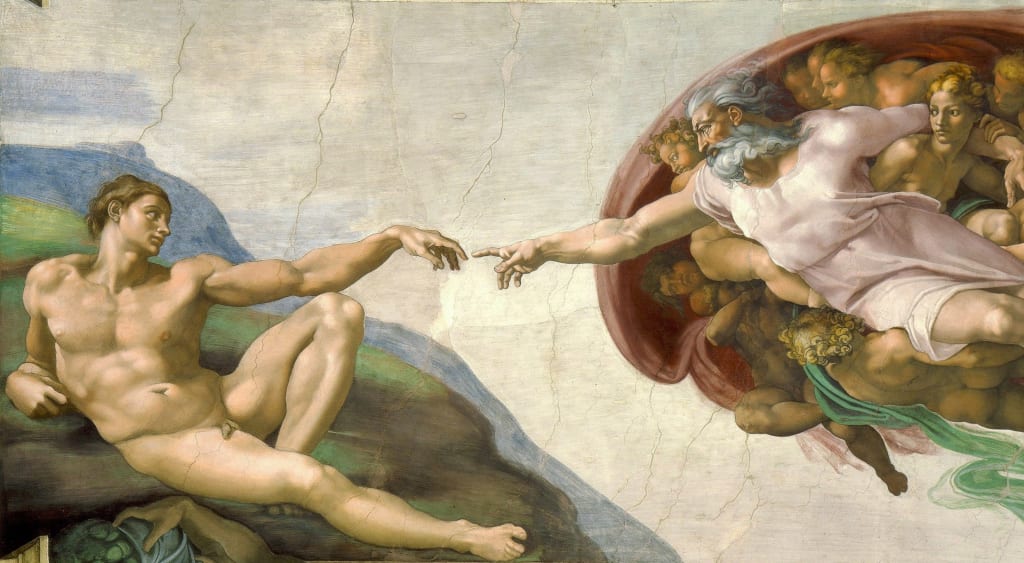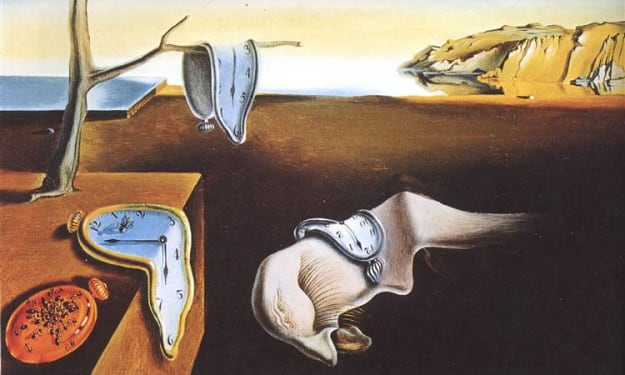
"The Creation of Adam" is perhaps one of the most iconic frescoes in the history of art, adorning the ceiling of the Sistine Chapel, commissioned by Pope Julius II and painted by the polymath Michelangelo Buonarroti between 1508 and 1512. Its impact and significance not only rests on its aesthetic merit, but also for its profound theological and philosophical implications.
The fresco depicts a seminal moment in the Christian narrative, derived from the Book of Genesis: God breathing life into Adam, the first man. This act is encapsulated in a single, electric moment of anticipation, seconds before their fingers touch. It is the literal spark of life, the juncture of divine intervention and human existence.
The painting's composition places God and Adam at its center, with their outstretched arms leading towards each other. This moment of near-contact, where God imparts the ‘breath of life’ to Adam, is a moment pregnant with potential. It highlights the role of God as the bringer of life, and humanity as a creation imbued with a divine spark.
Michelangelo breaks the traditional representation by humanizing God. Instead of an imposing, authoritative figure, God is portrayed with dynamism, in motion, carried by a cluster of angels amidst a swirling cloak. This element of God’s portrayal suggests a deity involved in and dedicated to his creations.
Adam, too, is a departure from the conventional, meek representation. He is shown as a strong, well-proportioned figure, embodying the Classical Greek ideal of human physical perfection, encapsulating Michelangelo's study of anatomy and his Renaissance ideals. His posture, while relaxed, exudes a sense of quiet expectation, mirroring the suspense of the moment.
The key to understanding the significance of "The Creation of Adam" is in the details. The space between God's and Adam's fingers, tantalizingly close yet not touching, is charged with meaning. This gap symbolizes the infinite distance between God and man, and yet, their imminent connection suggests the possibility of union, of understanding, and of a shared divine-human nature.
Even more fascinating is the structure surrounding God, interpreted by some as an anatomically accurate representation of the human brain, including the frontal lobe, optic nerve, and the pituitary gland. If intentional, this presents a radical interpretation: the seat of human knowledge, wisdom, and learning is divinely inspired. It questions where the divine ends, and the human begins - a captivating duality of existence, as it were.
Additionally, the figures surrounding God, often assumed to be angels, are ambiguous upon closer inspection. None possess wings, a typical symbol of angels. One figure in particular, under God's left arm, often thought to be Eve, gazes intently at Adam. If indeed Eve, her inclusion adds a layer of foreshadowing of the narrative yet to unfold.
In terms of color, Michelangelo employs a rich, vibrant palette. The radiant blues, purples, and reds of God's assembly contrast against the earthy tones of Adam and the barren landscape. The color differential indicates a separation of the earthly and the divine, while their impending connection defies this divide.
As for the technique, the fresco is a testimony to Michelangelo's mastery. Each form is rendered with detailed accuracy, from the muscle groups to the emotional expressions. This meticulous realism works in concert with the profound theme to create an intensely human yet divine narrative.
On a broader canvas, "The Creation of Adam" encapsulates the spirit of the High Renaissance - the merging of art, religion, and science. The humanistic portrayal of God and Adam reflects the Renaissance emphasis on individualism. The potential anatomical representations resonate with the period's scientific explorations. The choice of a biblical narrative echoes the era's religious fervor.
Moreover, the painting invites the observer into a dialogue about the relationship between God and humanity, questioning the nature of existence, the divine's role in human intellect, and the potential for human connection with the divine.
In conclusion, Michelangelo's "The Creation of Adam" is a masterwork, offering a profound narrative both visually and thematically. By bridging the divine and human, it prompts reflections on humanity's place in the universe and the nature of existence itself. The painting thus stands not merely as a depiction of a biblical moment, but as a timeless exploration of life, knowledge, and the human condition. Its layers of meaning continue to resonate, ensuring its place as one of the most impactful works in the annals of art history.
About the Creator
Midas
Hello! I'm Midas, the storytelling enthusiast. From mythical tales to high-stakes adventures, I bring life's magic to paper. When not weaving words, I delve into books or on a global escapade. Join me, as every tale is a golden adventure!






Comments
There are no comments for this story
Be the first to respond and start the conversation.